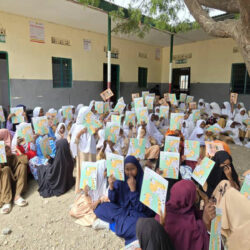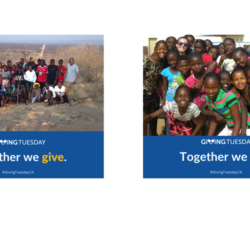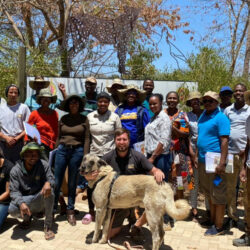Breeding cheetahs is hard
-

- by Meredith Hanel June 29, 2018
Habitat loss, human-wildlife conflict and poaching have brought today’s cheetah population down to a mere 7100 individuals. As the cheetah races towards extinction, wild cheetah conservation efforts and captive breeding programs race together to save them. Research on captive cheetahs gives insights for protecting wild cheetahs. Boosting wild populations with captive bread cheetahs reintroduced to the wild is possible. Only 20% of cheetahs breed successfully in captivity, partly due to reduced genetic diversity but also because we are still learning what they need.

Reduced Genetic Diversity
Cheetahs endured two major events which reduced their numbers and their genetic diversity. The first was when the modern cheetah’s ancestors migrated from North America to Asia, Europe and Africa, at the beginning of the last ice age. The second was when the ice age ended, around 12,000 years ago when a small fraction of cheetahs survived a large mammalian extinction. Lack of breeding partners lead to inbreeding which further reduced genetic diversity.
Certain disadvantageous gene variants, affecting their reproductive health, became common. Cheetahs have poor sperm motility and increased infant mortality. Knowing the genetic background of cheetahs allows zoos and sanctuaries to choose mating pairs that increase genetic diversity in their cheetahs. Getting them to mate and produce offspring is harder, but research is helping.
Timing is tricky
Unlike house cats, female cheetahs do not make it obvious when they are ready to mate and they may not go into heat for several months. The Smithsonian Conservation Biology Institute (SCBI) enlists male cheetahs to sniff the yards of a female. If she is ready the male will respond with a telltale barking sound attempting to call the female over. Still, when mating fails to produce offspring it is hard to tell if things went wrong at conception or if fetuses were lost. That’s why researchers there are looking for molecular markers in cheetah scat that could confirm pregnancy.
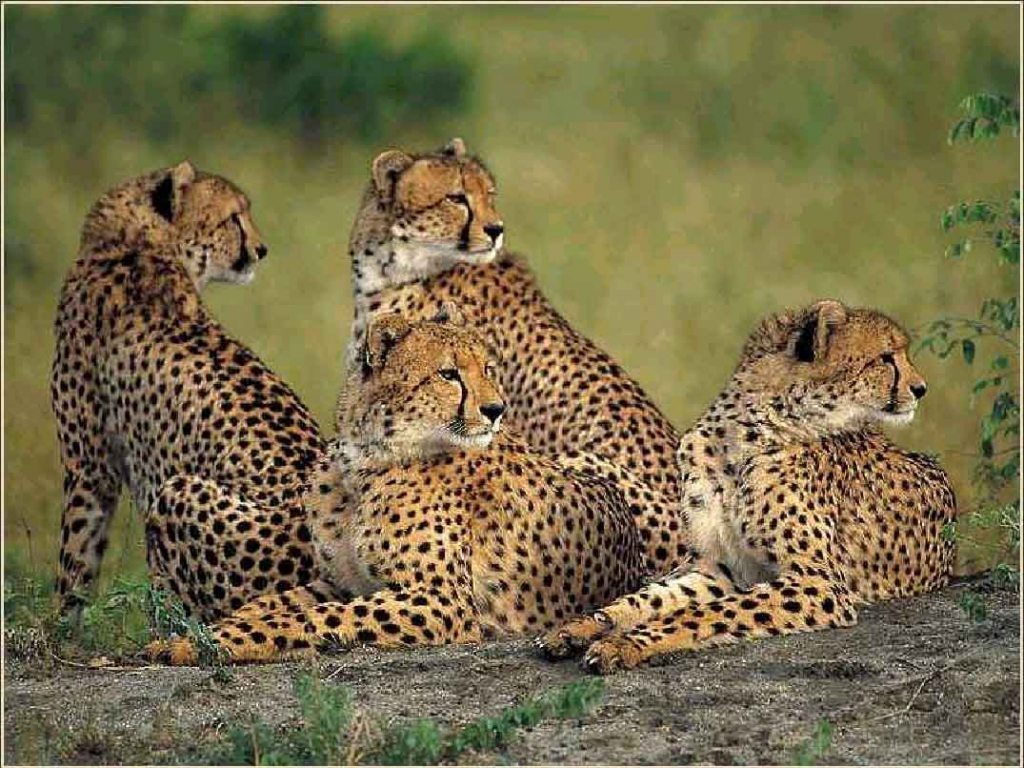
The company they keep
Males produce better quality sperm when they are away from the public eye or have fewer care-givers, and also when they are grouped with other males. The later research finding was informed by observations in the wild, of male cheetahs often living with their brothers. On the other hand, female cheetahs are more successful at breeding when they have been transferred away from the facility where they were born, mimicking what would happen for them in the wild.
Assisted Reproduction
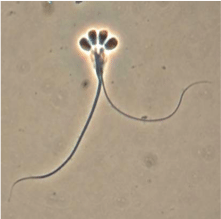
Sometimes two cheetahs that are a good match genetically, just don’t like each other. Artificial insemination is one way to get around finicky cheetahs or to avoid transporting them. Unfortunately, cheetah sperm is finicky to preserve. Compared with human and bull sperm, the structure of cheetah sperm is more prone to damage from freezing and defrosting. To overcome this Cheetah Conservation Fund (CCF) and SCBI researchers are collaborating to find methods to better preserve sperm quality in cheetah samples. Artificial insemination using laparoscopy has proved successful because it gets the sperm closer to the eggs so they don’t have as far to swim. CCF and SCBI researchers have also successfully produced cheetah embryos by In vitrofertilization (IVF). CCF houses the only cheetah genetics laboratory in Africa and maintains a genome resource bank with sperm, eggs and very early stage embryos produced by IVF which may be used to boost genetic diversity in both captive and wild cheetahs. CCF holds the world’s largest wild cheetah database of biological material.
Despite hardships, the cheetah population bounced back to hundreds of thousands in the nineteenth century. While humans are to blame for their low numbers today maybe humans can help these resilient creatures bounce back again.
Your support can make a different to save the cheetah in the wild!
References
(2016) Cheetah genetic pool continues to decline: Cheetah Conservation Fund partners with Smithsonian researchers in new study on the decline of genetic diversity in wild cheetahs.Retrieved from https://economist.com.na/18106/environment/cheetah-genetic-pool-continues-to-decline-cheetah-conservation-fund-partners-with-smithsonian-researchers-in-new-study-on-the-decline-of-genetic-diversity-in-wild-cheetahs/
Cheetah Sustainability Program– Conservation Centers for Species Survival. Retrieved from http://conservationcenters.org/programs/sustainability-programs/cheetah/
Cambata, A. (2011). Saving Big Cats: an interview with Dr. Laurie Marker | Voices for Biodiversity. Retrieved from https://voicesforbiodiversity.org/articles/saving-big-cats-an-interview-with-dr.-laurie-marke
Crosier, A. E., Henghali, J. N., Howard, J., Pukazhenthi, B. S., Terrell, K. A., Marker, L. L., & Wildt, D. E. (2013). Improved Quality of Cryopreserved Cheetah (Acinonyx jubatus) Spermatozoa After Centrifugation Through Accudenz. Journal of Andrology,30(3), 298-308. doi:10.2164/jandrol.108.006239 from https://onlinelibrary.wiley.com/doi/abs/10.2164/jandrol.108.006239
Dobrynin, P., et al. (2015). Genomic legacy of the African cheetah, Acinonyx jubatus. Genome Biology, 16(1), 277. doi:10.1186/s13059-015-0837-4 from https://genomebiology.biomedcentral.com/articles/10.1186/s13059-015-0837-4
Durant, S. M., et al. (2017).The global decline of cheetah Acinonyx jubatus and what it means for conservation. Proceedings of the National Academy of Sciences, 114(3), 528-533. doi:10.1073/pnas.1611122114 from http://www.pnas.org/content/114/3/528
Gillman, S. J., Ziegler‐Meeks, K., Eager, C., Tenhundfeld, T. A., Shaffstall, W., Stearns, M. J., & Crosier, A. E. (2017). Impact of mimicking natural dispersion on breeding success of captive North American Cheetahs (Acinonyx jubatus). Zoo Biology, 36(5), 332-340. doi:10.1002/zoo.21377 from https://onlinelibrary.wiley.com/doi/pdf/10.1002/zoo.21377
Koester, D. C., Freeman, E. W., Brown, J. L., Wildt, D. E., Terrell, K. A., Franklin, A. D., & Crosier, A. E. (2015). Motile Sperm Output by Male Cheetahs (Acinonyx jubatus) Managed Ex Situ Is Influenced by Public Exposure and Number of Care-Givers. PLOS ONE, 10(9), e0135847. doi:10.1371/journal.pone.0135847 from http://journals.plos.org/plosone/article?id=10.1371/journal.pone.0135847
Koester, D. C., Freeman, E. W., Wildt, D. E., Terrell, K. A., Franklin, A. D., Meeks, K., & Crosier, A. E. (2017). Group management influences reproductive function of the male cheetah (Acinonyx jubatus). Reproduction, Fertility and Development,29(3), 496-508. doi:10.1071/rd15138 from http://www.publish.csiro.au/rd/rd15138
Koester, D. C., Wildt, D. E., Maly, M., Comizzoli, P., & Crosier, A. E. (2017). Non-invasive identification of protein biomarkers for early pregnancy diagnosis in the cheetah (Acinonyx jubatus). PLoS ONE, 12(12). doi:10.1371/journal.pone.0188575 from https://www.ncbi.nlm.nih.gov/pmc/articles/PMC5728495/
Marker, L. (2008) Cheetah Conservation: Namibian cheetahs help global populations reproduce. Travel News Namibia. Retrieved from http://www.travelnewsnamibia.com/conservation/cheetah-conservation-global-reproduction/
O’Brien, S.J., et al. (2017). Conservation Genetics of the Cheetah: Lessons Learned and New Opportunities. Journal of Heredity, 108(6), 671-677. doi:10.1093/jhered/esx047 from https://academic.oup.com/jhered/article/108/6/671/3836924
Robertson, J. (2017) Long before Canada was Canada, a cousin of the modern-day cheetah roamed North America. Cheetah Conservation Fund Canada. Retrieved from https://cheetah.org/canada/2017/07/08/long-before-canada-was-canada/
Rogers, K. (2016) Cheetahs Are Hard. Motherboard. Retrieved from https://motherboard.vice.com/en_us/article/4xavnw/cheetahs-are-hard
Related Reading
-
November 9, 2023
Giving Tuesday Canada 2023 – Supporting Namibian Youth
